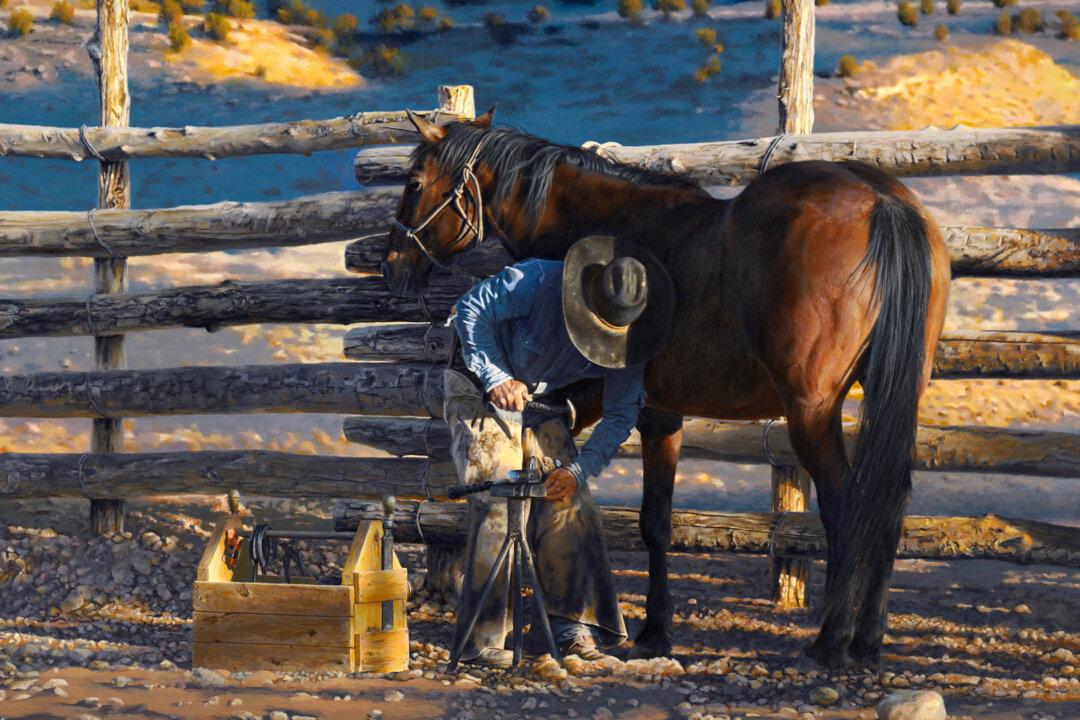Disclaimer: This article was published in 2023. Some information may no longer be current.
Donning a yellow slicker, the cowboy crouches beside Biscuit before a day’s ride, sipping from his mug under a makeshift tent. The fog hangs thick. You can almost feel the wet.






